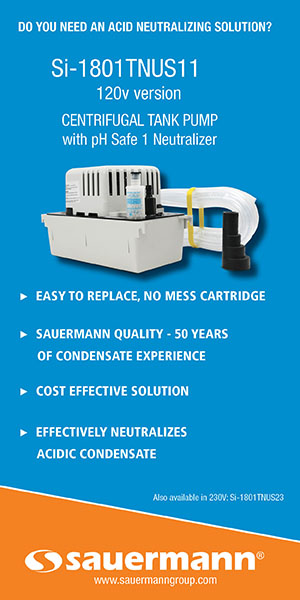
Despite what the Declaration of Independence says, all technicians are NOT created equal
Every Independence Day we celebrate our glorious founding and the Declaration of Independence that proclaims, ‘all men are created equal with certain unalienable Rights.’ While that is certainly accurate in life, it is most certainly inaccurate in the HVAC trades.
Remember going through trade school? Think about how there was the guy who could conceptualize theories or procedures with a simple explanation. And the other guy who needed to actually put his hands on things and do it himself in order to learn it, whatever it was. It seems that there are those who ‘see’ things more clearly than others. They have more mechanical minds. They’re wired differently. Of course, there are also those who take a little longer to grasp certain concepts, but are just as smart. It is our job as managers and owners to figure out who’s who in our organization.
Get Started
In 2016, I was invited by David Richardson to present at the annual NCI Summit in Savannah, Ga. Our topic – ‘just get started.’ This was perfect for me on several levels.
First, joining forces with Dave was perfect. He knew of our Performance-based contracting’ implementation challenges and helped us get back on track.

Summit 2016 was held in Savannah, Georgia
Our company was like so many of the companies that attended our NCI Summit sessions. We took a long time to finally start and get everyone on board. Our team had the training and support, but lacked the commitment. So we struggled with implementation and consistency.
The solution was so simple that I felt extremely foolish for not figuring it out earlier. It was an ‘aha’ moment that reminded me of my introduction to Air Diagnostics.
Technicians Should Understand TESP, Pressure Drops, and Static Budgets
I took my first Air Balancing class in Rockville, Maryland in 2005. To demonstrate just how long ago that was, NCI President Rob Falke was the instructor. I was fortunate enough to take his class but even more fortunate to hear his words, ‘I don’t care what the efficiency rating is on that box (the outdoor unit), if your delivery system isn’t right, you’re not getting it!!? Talk about feeling foolish!!! The concept was so obvious.
How could I have not come to that conclusion on my own? Rob’s words were so poignant that they still live in the front of my brain a dozen years later. Once I figured out the solution to complete implementation of ANY system, the simplicity of it again had me wondering what took me so long to figure it out.
What I am talking about is Total External Static Pressure (TESP). Once armed with the knowledge of TESP, pressure drops, and static budgets, I was raring to go. I tested my system, the neighbors’, and my relatives’ systems. ‘I bought a flow hood, Magnehelic gauges, and thermo-hygrometers for my technicians so they could test every system they came across. Then I told them to test their own, their friends’, and their family’s systems.
Team Buy-in – Not So Much

Change is hard. Technicians don’t buy in to Performance-Based Contracting all at once.
What I didn’t know was that I was like Will Ferrell in the movie Old School: leading college students to go streaking in the Quad, only to find that he was streaking by himself.
I did have one guy who completely embraced the training and tested every system he saw. He became so good at it that it intimidated the rest of the crew so much that they would never test or ask any questions about testing. The tools I bought them just bounced around their truck, never used.
I spent years trying to get everyone excited about Air Diagnostics and testing. I had everyone certified and re-certified. Sometimes I would get angry and very vocal. I felt I had done everything necessary to help my guys succeed. That rationalization about ‘you can lead a horse to water, but you can’t make him drink,’ became real to me. I blamed them but the blame was squarely on me. I had failed to realize my organization’s strengths and weaknesses ‘ a mortal sin in any position of leadership.
One-on-One Approach with Technicians
Finally, I tried a new approach. I told one of my techs who was very nervous about Air Diagnostics and Combustion Analysis, to take static pressure readings and bring them back to the office to discuss with me. I told him to say nothing to the customer about his readings or that he even took readings. He took the readings, brought them to me and we went over them on the white board. We drew the layout of the system and plotted his readings accordingly.
We did this over and over and over again. He eventually got comfortable enough to educate our customers about static pressure and what it means to air flow and efficiency. Again, I felt very foolish for missing the glaring simplicity of this strategy for so long.
I had another tech who was deathly afraid of performing a combustion analysis. He admitted that he was afraid that the customer would ask him a question he wouldn’t be able to answer. It is human nature to avoid the things with which we are uncomfortable.
Again, I took a one-on-one approach: I had him take his readings, write them down, and then I went over them with him at the office. For him, the key was not having to discuss the readings with the customer until he was comfortable. Removing the pressure of a potentially uncomfortable situation made all the difference. Shortly thereafter, he was one of our better combustion analysts.
That same tech was struggling with Air Diagnostics as well. I used the same strategy as before ‘ test, say nothing, discuss with me in the office. Suddenly, he had customers helping him test their systems while educating them in the process.
Technicians Should Enable Customer Participation
One great story I like to share involves this same technician. He found a system with a large pressure drop across the evaporator coil. The tech had the customer testing with him while telling her what pressure drop he was looking for. Then he said he’d clean it in place and quote a price to do so. However, the technician warned that if it didn’t work he would have to pull the coil out and clean it more thoroughly. Finally, he quoted an additional price for that.
She agreed to take a chance and have him clean it in place. He did but the pressure drop was still too high. She had him pull the coil and clean it. He tested it again and got the pressure drop down to where it needed to be. She was thrilled and happy to pay the extra money for pulling and cleaning the coil.
Testing with the customer — step-by-step –got her invested in the project. He said it became a mission for her to get the right pressure drop. She was saying things like ‘what do we do next?’ It would be great if every customer was so involved and excited about testing. Unfortunately, she was the exception, not the rule.
Getting Traction
Since changing our implementation strategy, all our technicians are now testing every system they work on. They all have success stories of varying degrees. They also have had extreme challenges with customers who

were very suspicious of their findings. Those of us who are testing have all heard people say, ‘I’ve lived here for 15 years and have never had a problem? or ‘nobody has ever told me this before, why is it a problem all of a sudden?’ ?
We find it best to not argue with them. We share our findings, document our recommendations, and move on. The more you try to convince them, the more suspicious they become. Today, when we find a system with a high TESP we simply ask the customer which rooms are warm in the summer and cold in the winter. Most of the time, they look at us like we have a crystal ball. They wonder how we knew they had those issues, which gives us instant credibility. If they say they don’t have any comfort issues, we explain our findings and their options. Now the ball is in their court.
Technicians NOT Created Equal
Our technicians are now very comfortable having these discussions with customers. They not only have the knowledge, but the confidence to educate our customers. Once I stopped trying to fit a square peg in a round hole, everything fell into place.
Understand not all technicians are equal and that’s OK. They learn at their own pace and comfort level. Find out what that is and adjust their progression accordingly. Be patient and the results happen quicker than you expect.

Michael Hartman
Michael S. Hartman is the owner of Thomas E. Clark HVAC, Inc., a family-owned and operated plumbing, heating, and air conditioning firm located in Silver Spring, MD.
Since joining the business in 2002 he has been working steadily on bringing the business into the 21st century by re-targeting their focus onto Performance-Based Contracting’ as proscribed by National Comfort Institute, Inc.
He can be reached at Mike@ThomasEClark.com.













Recent Comments